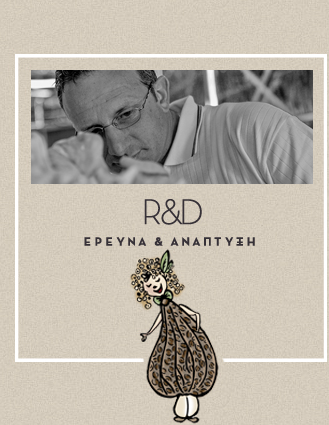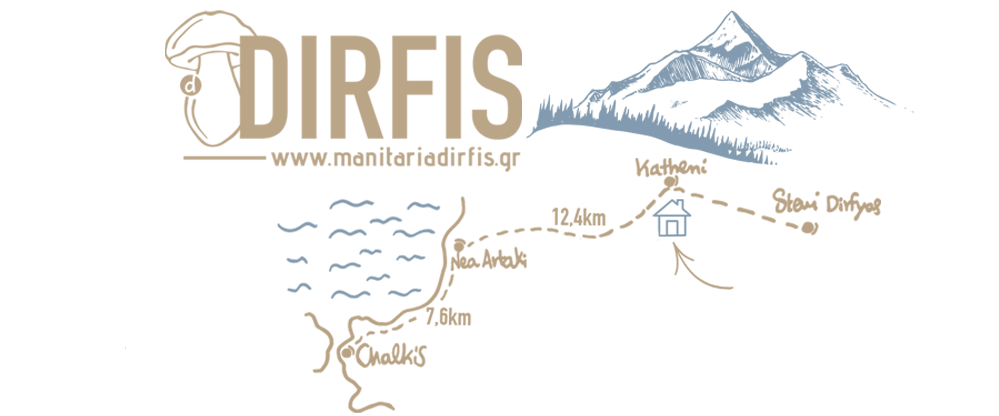- Details
- Written by Eva
- Category: production-en
- Hits: 3575
Raw materials
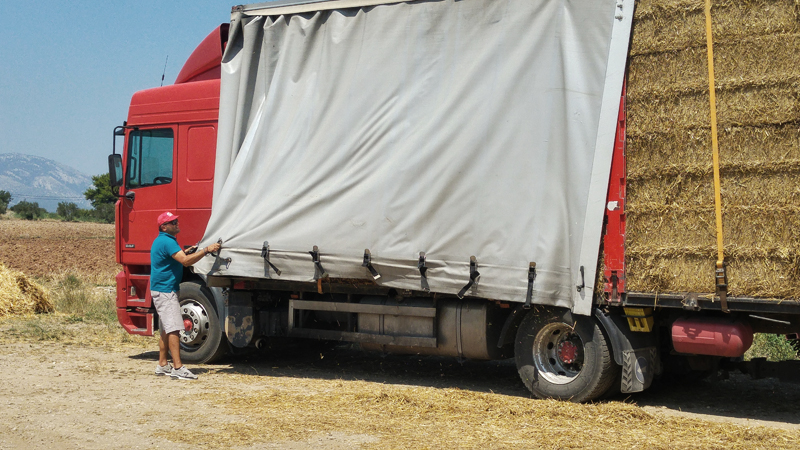
The production of DIRFIS MUSHROOMS is environmentally and socially responsible. Through our methods and procedures, the company constantly strives to increase the efficiency with which natural resources are used to meet human demands for its products and services. IT promotes a more sustainable lifestyle for its customers by adopting an ecological perspective, avoiding harmful emissions to the environment, making efficient use of energy and sustainably produced resources, and creating a circular economy of raw materials and recycling.
Our Production
Wheat straw collection. In nature, mushrooms feed on decomposing organic waste (leaves, wood, etc.). This allows them to return inorganic elements and humus to the ecosystem, which are essential for plant nutrition. Wheat straw is an organic material comparable to that found by mushrooms in nature. Furthermore, it exists in significant quantities and has a rather stable composition and structure. Every summer, we use our equipment to collect the highest quality wheat straw from various fields in central Greece to create the foundation for a successful substrate. We apply strict standards to this straw, including on-site sample testing and physicochemical analysis in accredited laboratories. Second cutting of alfalfa hay before flowering. It is an essential ingredient for enhancing and increasing the nutrient content of the substrate, completely environmentally friendly and completely replaces chemical fertilization. Mycelium spawning. In March 1931, James W. Sinden received a patent from the US Patent Office for his method of creating mushroom spawn. After injecting mushroom mycelium into a sterile grain ovule, the ovule will be created. DIRFIS MUSHROOMS uses the same fundamental process that is still used to produce the spawn today, 86 years later. In addition to collaborating with the largest spawn production company in the world, DIRFIS MUSHROOMS also participates in evaluation programs for new hybrids prior to our introduction into commercial production. Depending on the needs, the habitat, the characteristics of the sporocarps (fruiting bodies) they produce, etc., the strains are divided into various groups. We often use the hybrids: Helios, 3253, HK35, KRYOS Fotius among others.
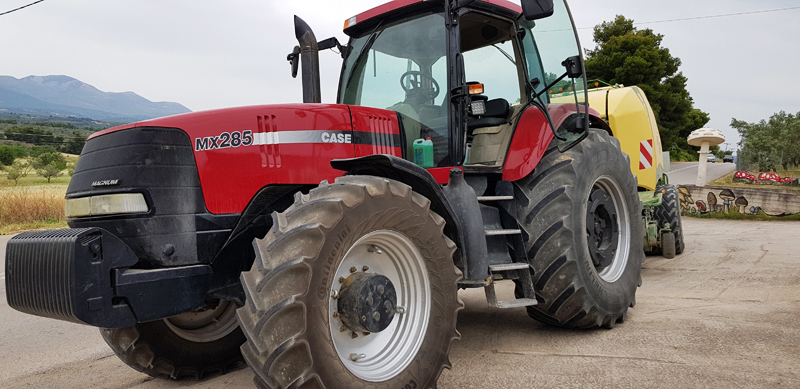
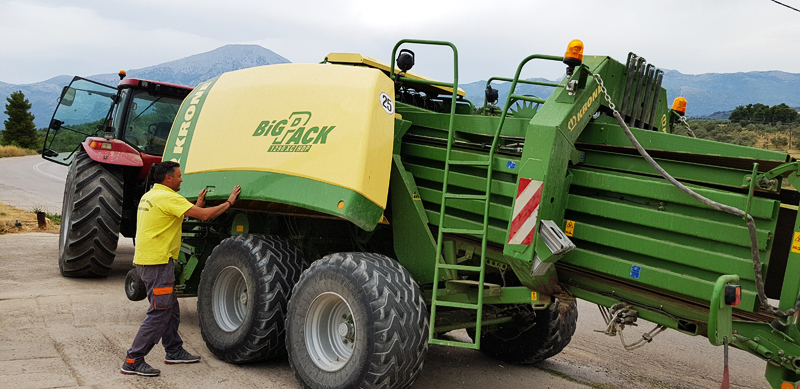
- Details
- Written by Eva
- Category: production-en
- Hits: 3337
Substrate Production
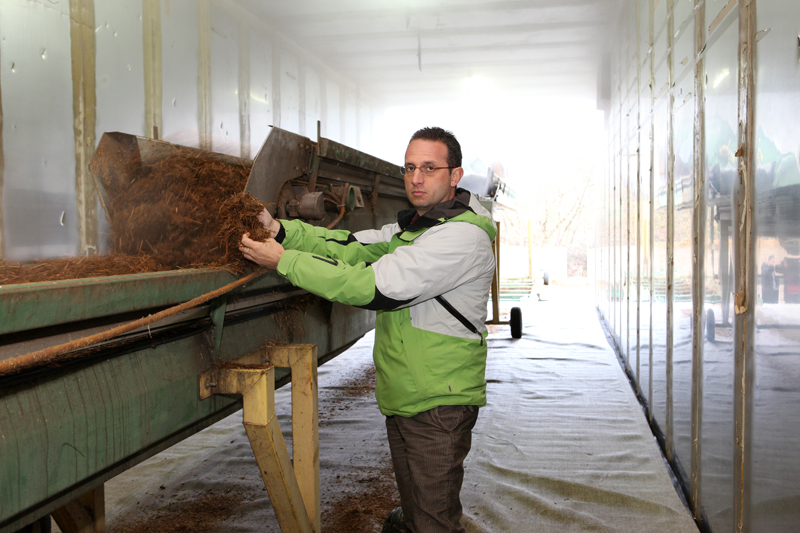
Mushroom cultivation is a modern use of microbial technology to convert organic waste into biomass and a nutrient-rich diet for humans. After a thorough examination of the biology of true fungi (mushrooms), we have established a high-tech production facility in which we approach with respect, passion, care and taste a model so expertly applied in nature.
DIRFIS MUSHROOM substrate production unit is located on 2.5 acres in excellent conditions at the foot of Mount Dirfis, away from any industrial activity. It follows strict standards and is based on Dutch technology. Indicative Productivity per week: 120 tons of incubated Pleurotus spawning substrate. The pasteurization tunnel is 30 meters long and 4 meters wide. The Fancom 750 provides automatic climate control. Substrate standardization: automatic winch blocking emptying in a space with strict hygiene standards. The substrate incubation includes controlled conditions on shelves with a total area of 6000 m².
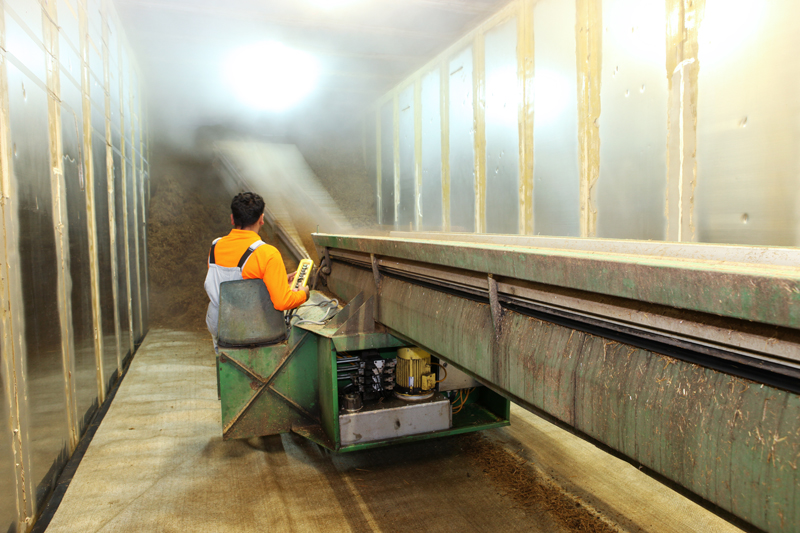
- Details
- Written by Eva
- Category: production-en
- Hits: 6000
Mushroom Cultivation
The rapid and unexpected appearance of mushrooms is one of the most amazing phenomena of nature. This phenomenon is directly influenced by the osmotic pressure and the evaporation rate of the growing mycelium fruiting. We constantly work to keep the evaporation rate within the necessary limits, applying appropriate ventilation, ambient temperature and humidity in the growth tunnels.
Waste management
At the end of the cultivation process, the substrate is removed from its plastic cover. The plastic is recyclable and is sent to a recycling company, while the used substrate is left alone to preserve itself naturally. Three to four months later, it's an ideal material for soil improvement in arboriculture or gardening. The electrical or thermal energy used on this crop is insignificant because we intelligently employ the substrate's energy for heating, meanwhile cooling panels are adequate to generate the ideal microclimate in the most ecologically friendly way.
Medicinal Mushrooms
DIRFIS MUSHROOMS was the first to introduce the technology for producing medicinal mushrooms Lentinula edodes to Greece in 2006. Known as "Shiitake" in Japanese, "Xianggu" in Chinese, this particular mushroom has been cultivated in China since 1000 A.D. and exported all over the world.
- Details
- Written by Eva
- Category: production-en
- Hits: 2503
Drying Process
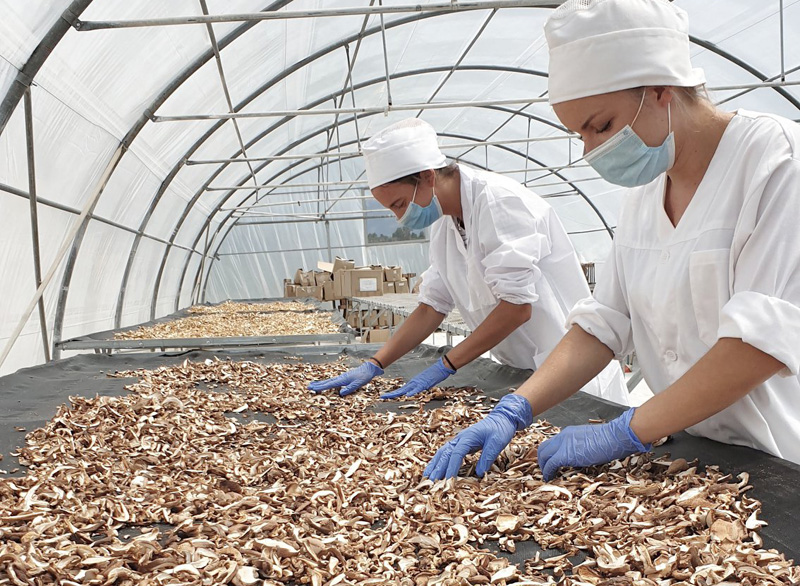
When harvested mushrooms are exposed to sunlight during the summer, they begin to naturally produce vitamin D in large quantities. The explanation is that UV light converts ergosterol, a naturally occurring substance in mushrooms, into ergocalciferol (vitamin D2). Solar drying produces safe and high-quality dried mushrooms with great taste and enhanced flavor that can be used all year. As a result, dried mushrooms have the potential to serve as an excellent natural source of vitamin D during the winter months.
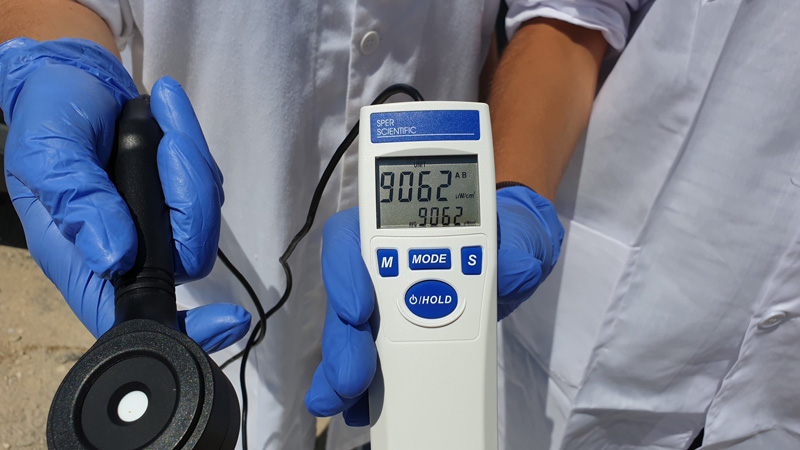
DIRFIS MUSHROOMS pioneering once again as Europe's first company to market dried mushrooms with high vitamin D levels. Our solar-dried "My delicious OYSTER MIX" consists of golden and grey oyster mushrooms that were organically grown on our farm on the Greek island of Euboea, far from any industrial activity and surrounded by organic olive groves. The dried mix contains over 2100μg of Vitamin D2 per 100g, making one or two mushroom slices sufficient for the recommended daily intake. Solar-dried mushrooms are the only source of vitamin D for vegans.






























